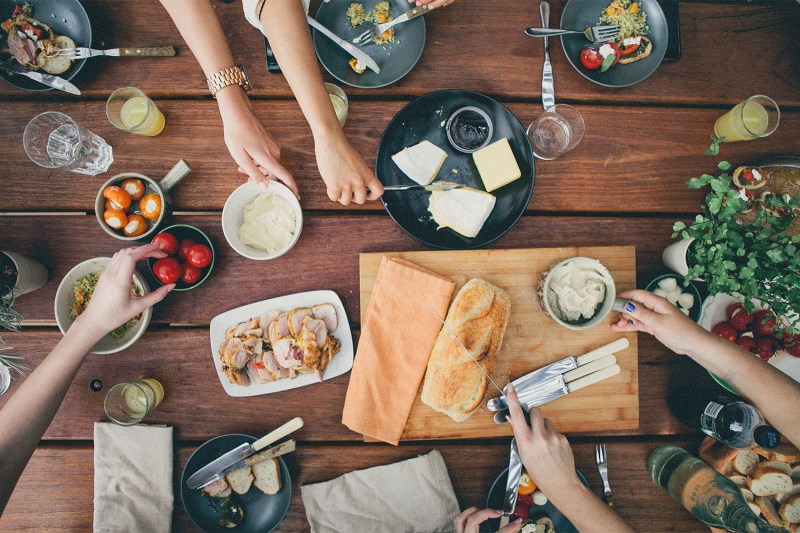
Back in the day (by which we mean about 10 to 15 years ago), restaurant dinners often started with a complimentary basket of warm rolls, sliced focaccia, or some other bread product, served alongside a dish of butter pats or a vial of extra-virgin olive oil. Intended as a sign of welcome, this gratis treat established a hospitable vibe and provided diners with a convenient and cost-free snack to enjoy with their pre-dinner drinks.
However, in today’s dining culture, free bread (or other starters like chips and salsa) before the meal can no longer be readily assumed. In fact, it’s become a rare perk as more and more neighborhood joints and high-end establishments choose to eliminate this feature and instead offer bread options for purchase.
So what changed? Why don’t restaurants consider complimentary bread service a necessary part of the hospitality model anymore? We found ourselves deeply curious about this shift in priorities, so we decided to investigate. After asking a group of restauranteurs, chefs, and hospitality experts to weigh in, we came up with the following list of reasons for the decline of free bread baskets.
Cost
The cost of quality bread cuts into profits
Perhaps most obviously, restaurants frequently choose to stop serving free bread baskets in an effort to boost their own bottom lines.
“The fundamental costs of really great, freshly baked bread or crispy chips directly from the fryer — including butter, salsa, utensils, plating, napkins, and the server and kitchen labor required to deliver these presentations consistently, to each and every table every day — is actually very expensive, time consuming, and operationally [difficult for] both the front and back of the house,” explained restaurant and business strategy consultant Baron Christopher Hanson of RedBaron.

Waste
Providing free bread often creates significant waste
An ever-increasing percentage of food-service businesses now opt to focus on waste-reducing initiatives … and offering free bread to tables who haven’t requested it does nothing to aid those efforts.
“Forty percent of all food waste comes from restaurants. Given that a typical restaurant produces 25,000-75,000 pounds of waste a year, which often amounts to inventory representing nearly one-third of its budget, chefs face real challenges when addressing this daunting issue. For this reason, restaurant owners are moving away from providing unrequested, complimentary bread baskets. The pay-for-bread model reduces waste, since attaching value to food makes people [less likely to discard it], and it also turns [bread baskets] into a revenue stream for the restaurant owner,” stated Jennifer Kaplan, instructor of food systems at the Culinary Institute of America in St. Helena, California.
Competition
Restaurants want to encourage guests to order appetizers … and complimentary bread compromises that goal
The restaurant business involves razor-thin profit margins, so restauranteurs must attempt to earn revenue at every available opportunity. While the bulk of any full-service eatery’s income likely comes from alcohol sales (with entrees hovering in a distant second place), a table that chooses to order appetizers in addition to main courses will generate a higher overall bill, which is good news for the restaurant.

Of course, a table that fills up on free bread probably won’t be especially motivated to sample any appetizers, and will therefore end up spending less money. “Limiting free bread encourages guests to order appetizers, increasing the average check,” claimed Rosie Atkins, VP of Product for Homebase Restaurant Software.
Trend
Gratis bread hasn’t been in fashion for a while, so it’s not expected by the younger generation of restaurant-goers
The final reason for the slowdown in the free-bread-basket game comes from a lack of expectations. Because complimentary bread hasn’t been a popular restaurant offering for at least a decade, diners in their twenties and thirties don’t consider it a necessity, so there’s little incentive for restaurants to take on the added cost.
General manager Trevor Gould of Broken English Taco Pub in Chicago, Illinois regularly witnesses this attitude shift first-hand, and he told us that “younger generations have never experienced the gratis chips-and-salsa approach while dining at a trendier restaurant, so it’s not expected. Free chips and salsa still exists, but it’s typically found at small mom-and-pop style eateries. Usually, this is due to them [being less interested in] trends, and they usually have to work harder and do more to [motivate] regulars [to come] back.”

While offering pre-meal snacks free-of-charge can prove burdensome to small operations struggling to stay afloat, some restaurants still consider it a vital aspect to their models of hospitality. In fact, because gratis bread baskets are less common than they used to be, establishments that still provide this perk view their bread selection as a major selling point for the restaurant as a whole.
One such restaurant, J&G Steakhouse at The Phoenician in Scottsdale, Arizona, takes enormous pride in the complimentary house-baked bread that they serve on a daily basis. “We feel it’s important to make our Parker House rolls fresh every day in-house. Although the total cost (ingredients as well as the hard work and talent of our baking team) of the bread is probably comparable to what other restaurants pay [for outsourced bread products], we feel that we have a truly handcrafted product which we control from origin to service. We serve them simply with cultured butter (which is tangier and richer in butterfat than sweet cream butter), and we think that our bread-and-butter service is uncomplicated, sophisticated, and truly appreciated by our guests,” General Manager Patrick Norton stated in his defense of J&G’s commitment to free bread service.



